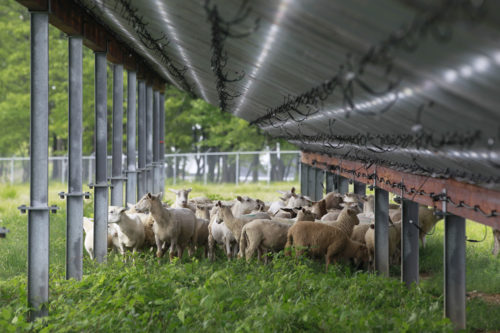Nonprofit Pennsylvania Solar Center and Fair Shake Environmental Legal Services have released a free guidebook to help Pennsylvania landowners – particularly those with large parcels of land – navigate the process of leasing their land for large-scale solar development. The guidebook can be accessed here.
According to the region’s electricity grid coordinator, PJM Interconnection, there are hundreds of large-scale solar projects being proposed across Pennsylvania. Combined with incentives from the federal Inflation Reduction Act, and the fact that large-scale solar is now the least expensive form of electricity, energy companies are expanding their solar operations through large-scale and community solar projects. Many have their eyes set on Pennsylvania due to its abundance of land and proximity to electricity transmission lines – and have been approaching large landowners to potentially lease their land. Leasing land is also an opportunity for landowners to access annual streams of income.
Strong candidates for large-scale solar leasing often have 20 acres or more of land, live near large electric transmission lines, and are positioned for favorable southern exposure to the sun. After a lease agreement is signed, large-scale solar developers install solar panels and send the power directly onto the grid, rather than to be used by a building on-site, similar to other large power plants like coal, gas, and nuclear plants. Landowners can typically receive lease payments of $800 to $1,500 per acre, per year, for 25-30 years.
“Our Landowner Guidebook helps answer Pennsylvanian’s commonly-asked questions about the large-scale solar development process,” said Matt Mahoney, Director of Government Affairs at the PA Solar Center. “It is designed to provide useful information on solar and the large-scale solar development process, such as the different types of solar projects, information to help determine if land is suitable for large-scale solar, the different stages of a solar lease agreement, farming and rural land considerations, case studies, and more information to ensure all stakeholders can share in solar’s benefits.”
The guidebook was developed over the last two years and includes interviews with stakeholders from a diverse group of professionals, including local government, farm advisory groups, and the solar industry, as well as legal, environmental, and land conservation groups.
Michael Parker, Executive Director and Managing Attorney at Fair Shake Environmental Legal Services, oversaw the legal team that researched and compiled the information contained within the Guidebook and helped lead a collaborative interview process to ensure the Guidebook integrates the perspectives of stakeholders across the solar value chain.
“Pennsylvania has so many laws and regulations around land use and environment protection, which are not always easy to understand,” said Parker. “So we wanted to put together this user-friendly guide to help streamline and de-mystify the process for those interested in possibly leasing their land.”
The private owners and stewards of Pennsylvania’s land play an important role in the continued growth of the new electricity grid. And solar development gives back, leaving the land in the same or better condition for the landowner’s next plan for their land. Solar energy’s unique characteristics offer a flexible, modular energy resource that provides an attractive option for landowners seeking a reliable, long-term investment. Pennsylvania’s solar future is bright, as landowners recognize the diverse value solar provides for Pennsylvanians: a safe, reliable, low-cost electricity generation industry serving Pennsylvania’s communities.
Solar is also an investment in the local economy. Pennsylvania’s renewable energy projects have created almost 10,000 jobs spanning the entire supply chain since 2004, from technicians and engineers to salespeople, construction workers, and manufacturers. According to the report “Finding Pennsylvania Solar Future,” increasing the solar portion of the state’s electricity mix from the current 0.5% goal to 10% by 2030 would create upwards of 100,000 jobs and result in a net economic benefit of $1.6 billion annually.
This study also found that solar development will require just a small amount of land. To generate just 10% of U.S. electricity with utility-scale solar energy, we would need less than 1% of Pennsylvania’s land. In addition, solar is a temporary use of the land. Pilings to hold the racking and solar are drilled into the ground and can be easily removed from the land after the use of the project – 25 or 30 years later. During that time, the soils will have become more fertile and the land can revert to prior use. Many solar projects are now also incorporating “agrivoltaics” such as sheep, pollinator-friendly plantings, and native grasses that provide natural habitat for birds and insects. (The PA Solar Center does not support the destruction of woodlands for solar.)
Large-scale solar energy plays an important role in diversifying and stabilizing our electricity prices. By 2030, natural gas will dominate the electricity sector at 70% of our electricity mix, which is a precarious situation for ratepayers. In the past several years the cost of natural gas spiked and utilities across the commonwealth jacked up their prices by 40% to 50%. These fluctuations are based on geopolitical issues that impact the ever-volatile cost of natural gas on the world market. By diversifying our electricity mix with more renewables (the state currently has less than 3% renewables), price fluctuations would be reduced. The sun also shines the most during the hottest and longest days of summer when the grid is taxed the most, so solar energy helps to shave peak demand times, further reducing the cost of energy for everyone.
News item from PA Solar Center



















